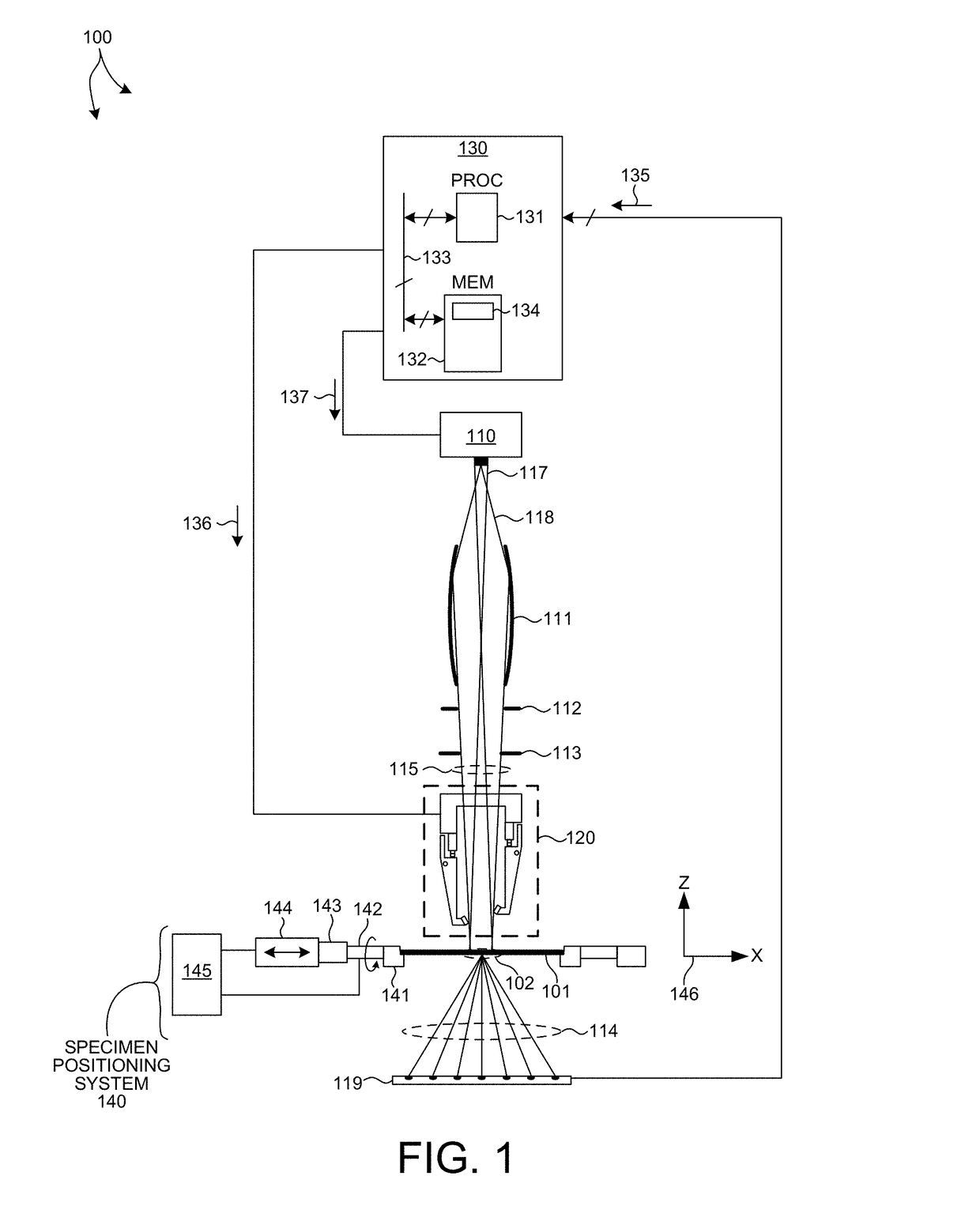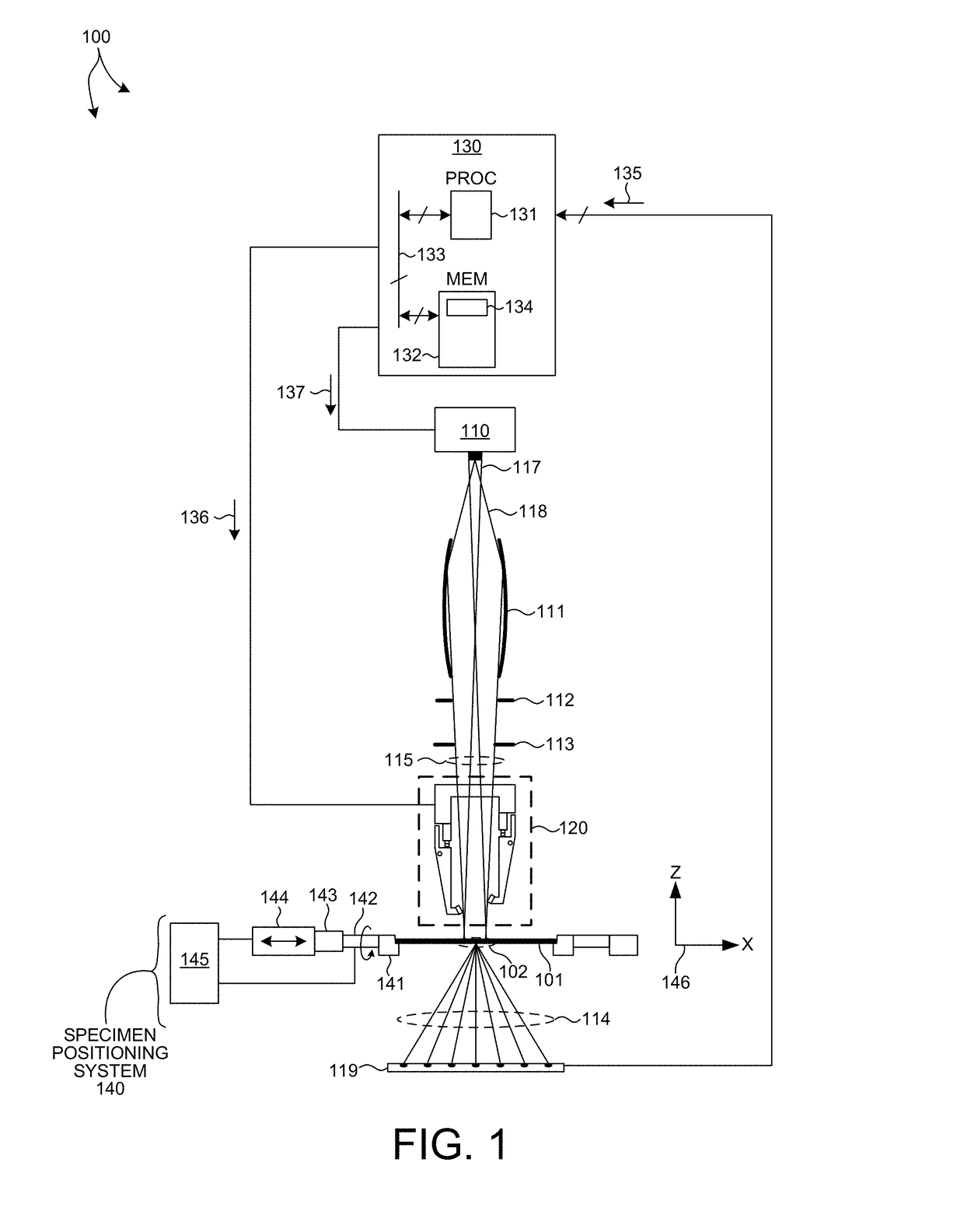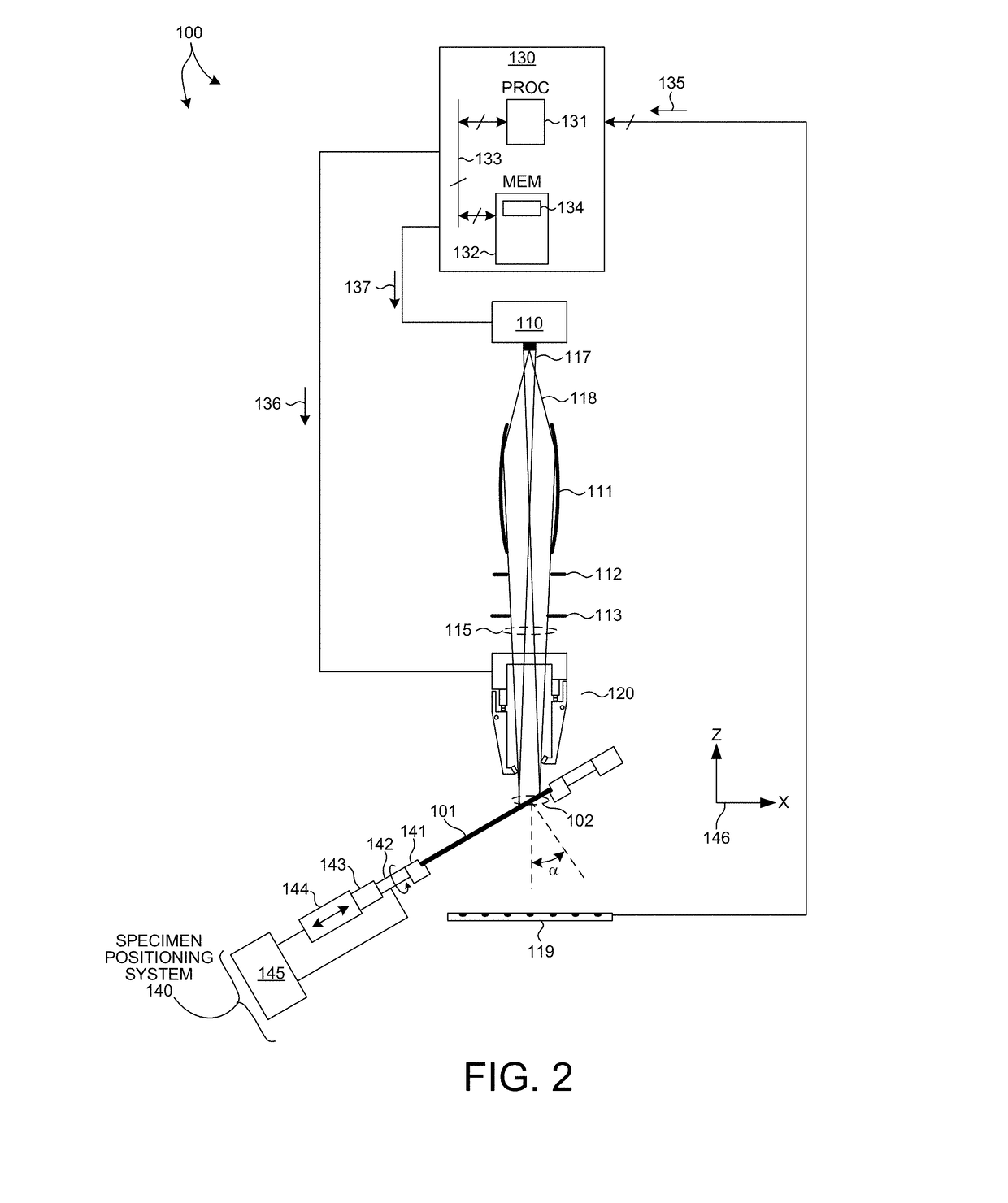As devices (e.g., logic and memory devices) move toward smaller nanometer-scale dimensions, characterization becomes more difficult.
Devices incorporating complex three-dimensional geometry and materials with diverse physical properties contribute to characterization difficulty.
For example, modern memory structures are often high-
aspect ratio, three-dimensional structures that make it difficult for
optical radiation to penetrate to the bottom
layers.
As a result, the parameters characterizing the target often cannot be reliably decoupled with available measurements.
However, the mirror like structure of 3D FLASH intrinsically causes decreasing
light intensity as the illumination propagates deeper into the film stack.
This causes sensitivity loss and correlation issues at depth.
As a result, measurements with thin-film scatterometry tools such as ellipsometers or reflectometers are becoming increasingly challenging.
However, these approaches have not reliably overcome fundamental challenges associated with measurement of many advanced targets (e.g., complex 3D structures, structures smaller than 10 nm, structures employing opaque materials) and measurement applications (e.g.,
line edge roughness and
line width roughness measurements).
Atomic force microscopes (AFM) and scanning-tunneling microscopes (STM) are able to achieve
atomic resolution, but they can only probe the surface of the specimen.
In addition, AFM and STM microscopes require long scanning times. Scanning
electron microscopes (SEM) achieve intermediate resolution levels, but are unable to penetrate structures to sufficient depth.
In addition, the required charging of the specimen has an
adverse effect on imaging performance.
X-ray reflectometers also suffer from penetration issues that limit their effectiveness when measuring high
aspect ratio structures.
For example, transmission
electron microscopes (TEM) achieve
high resolution levels and are able to probe arbitrary depths, but TEM requires destructive sectioning of the specimen.
But, these techniques require sample destruction and lengthy process times. The complexity and time to complete these types of measurements introduces large inaccuracies due to drift of
etching and
metrology steps.
In addition, these techniques require numerous iterations which introduce registration errors.
Unfortunately, available x-ray sources have a finite dimension in directions orthogonal to the direction of beam propagation.
In addition, slope and figure errors of the focusing
optics will further increase the beam spot size.
Current systems do not meet the requirements for measurements of metrology targets located in scribe lines where a beam spot size of 50 micrometers, or less, is required.
However, this results in a dramatic reduction of
photon flux, which makes renders the measurements ineffective.
Furthermore, reducing the size of the beam shaping slit does not completely solve the problem because
beam divergence always contributes to beam spread at the point of incidence with the specimen under measurement.
Of course, this arrangement is impractical because an infinitesimally small amount of illumination would be projected onto the specimen if a measurement
system were configured in such a manner.
Under these conditions, traditional beam shaping slits mechanically interfere with the specimen if they are not spaced apart from the specimen by a significant distance.
However, the disclosed beam blocks are only functional in the context of a
grazing incidence tool, not a T-SAXS tool where normal illumination, or illumination at angles up to 50 degrees from normal are required.
Future metrology applications present challenges for metrology due to increasingly small resolution requirements, multi-parameter correlation, increasingly complex geometric structures including high aspect ratio structures, and increasing use of opaque materials.
 Login to View More
Login to View More  Login to View More
Login to View More 


